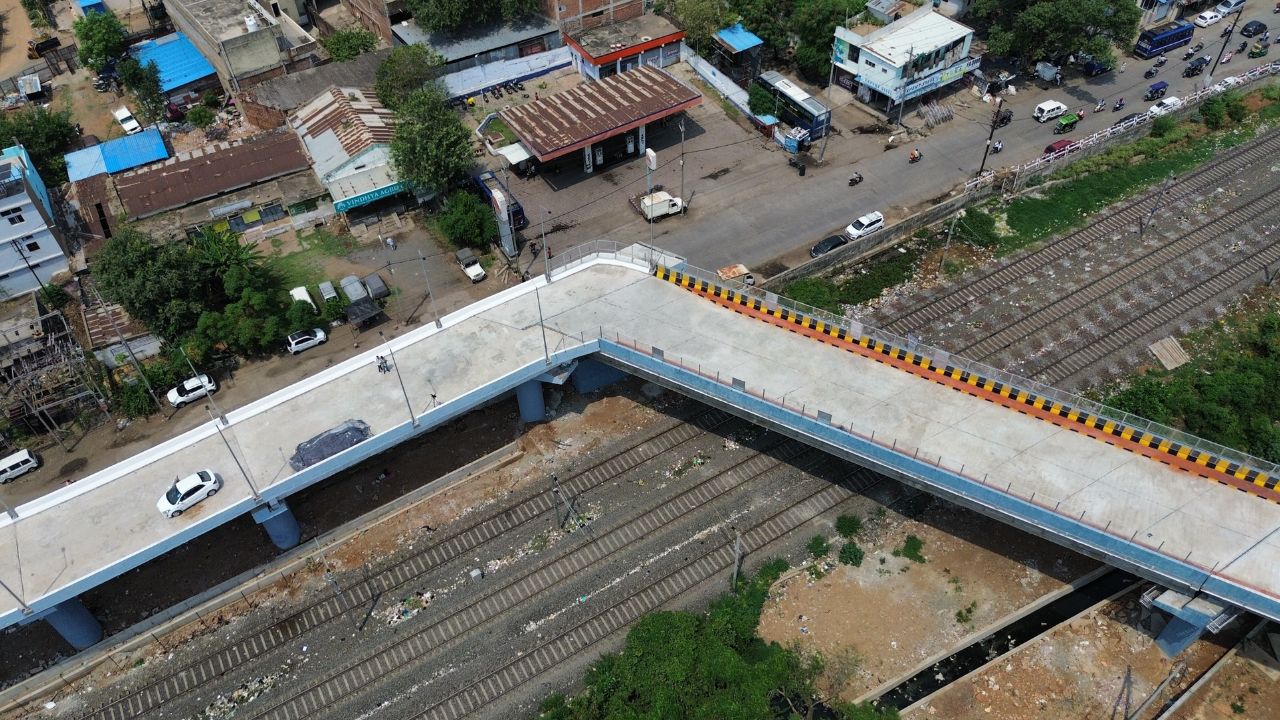90-Degree Bridge Fault: Will the Public Bear the Loss, or Will Contractors and Engineers Be Held Accountable?
Editor: Chandan M
Published on: June 30, 2025, 10:28 a.m.

Bhopal, Madhya Pradesh: In a case that has drawn national attention, the Madhya Pradesh government has taken disciplinary action against multiple engineers after a newly constructed railway overbridge (ROB) in Bhopal’s Aishbagh area was found to have a critical design flaw — a sharp 90-degree turn mid-structure. The flaw was widely criticized by citizens, urban planners, and on social media, where videos of the bridge quickly went viral. Concerns were raised about driver safety and engineering accountability. The ₹18 crore bridge was yet to be inaugurated when the design issue came to light. Government Action Taken Following public backlash and a preliminary review, the Madhya Pradesh government has suspended seven engineers and launched an inquiry against one retired engineer associated with the project. The officials belong to the Public Works Department (PWD) and the Bridge Construction Unit. The suspended engineers include: G. P. Verma – Chief Engineer (Bridge) Sanjay Khande – Chief Engineer (Design) Javed Shakeel – Executive Engineer Shabana Razzak – Executive Engineer (Design) Ravi Shukla – Sub-Divisional Officer Umashankar Mishra – Sub-Engineer Sonal Saxena – Assistant Engineer An inquiry has also been initiated against M. P. Singh, a retired superintendent engineer. The contractor responsible for construction and the consulting firm that designed the bridge have both been blacklisted, barring them from future government contracts. What Went Wrong The ROB includes a 90-degree turn at one end, a design that experts and the public believe violates safety norms and creates a high risk of accidents. The flaw became public after residents began sharing visuals of the awkward alignment online. The government stated that the turn was added due to space limitations near the metro line, but no official design audit or safety clearance for the curve has been publicly presented. Will the Public Pay for the Error? The bridge was constructed using ₹18 crore of public funds. As of now: There has been no formal announcement regarding recovery of funds from the contractor or the engineers responsible. There is no statement yet about any legal or financial liability being imposed on those found guilty. The cost of modifying or redesigning the structure, if undertaken, may require additional budget allocation, which is likely to come from the public exchequer. Thus, unless recovery proceedings are initiated, taxpayers may ultimately bear the financial burden of correcting the defect. Next Steps Chief Minister Mohan Yadav has confirmed that the bridge will not be opened to the public until corrective action is taken. A technical team is being deployed to assess how the design can be improved or modified for safety compliance. An internal review process has been initiated to investigate: How the flawed design passed multiple stages of approval Whether negligence or procedural violations occurred Potential recommendations for recovery of funds or legal action Conclusion The Bhopal bridge case has raised serious concerns about engineering oversight, public safety, and accountability in public infrastructure projects. While swift administrative action has been taken, the absence of financial or legal recovery mechanisms highlights a broader issue: public funds may continue to be vulnerable to poorly executed or inadequately reviewed projects unless systemic reforms are enforced. The final outcome — whether the cost will be recovered or remain a burden on taxpayers — remains to be seen.